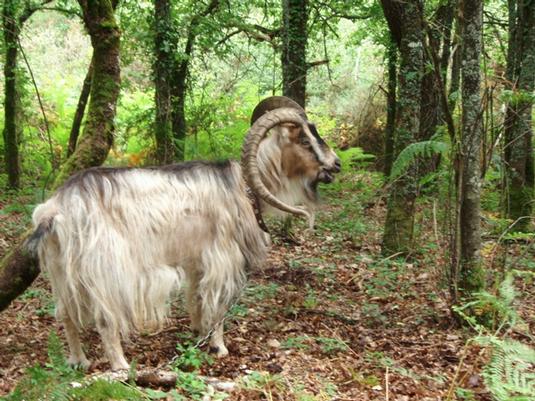A fabulous night of music and conversation. An assortment of local musicians at the village pub called Sterenn Roz (The Rose Star). These “session trad” have been held here for at least a quarter century. Young and old, playing in different combinations throughout the evening. No stage, just a comfortable mix of musicians and clientele. People switching instruments, dropping in or dropping out of a song as the spirit moved them, glances exchanged between players who found a common groove. The Celtic way. There were accordions; guitars, bagpipes, and a couple of reed instruments resembling a medieval shawm which they called a bombarde. Call-and-response, knees and feet catching the tempo. The style of performance, the rhythms and melodies bore a strong resemblance to Canadian folk music (It’s no accident that the acknowledged regional heart of Canadian folk is Cape Breton, Nova Scotia). But the fiddle, the workhorse of Canadian music, played no part. So the effect was a bit weird to me, as if someone played bluegrass with no banjo.
As it got later, some of the musicians left, but most stayed until the last customer left — the last, except for me, who could not tear myself away from the good time feeling. At this point, the pub’s owner asked me if I would care to share a drink with the musicians. What followed was a party in the back room, and “a drink” turned out to be a full-scale party with bottles of wine and stronger stuff, cheese, meat, bread, pastries. The conversation was loud, unbridled, ranging from broad humor to earnest politics, musical history, philosophy, this thing and that. I was probably thought of as an oddity, but I seemed to have gained acceptance. We finally stumbled off into the darkness at 5 AM. I fell asleep at my lodgings dreading the hangover I would get, but it did not materialize.
*
The archaeological site at Lann Gouh, north of Saint-Barthélemy and on the other side of the river Blavet, is a village that seems to have been founded around the year 980 AD. It was abandoned a few centuries later. Its houses disappeared under wind-blown soil, grass and scrub, but left mounds visible enough to arouse the suspicions of archaeologists. The full extent of the village is not yet known, but seventeen structures have been excavated so far. Whatever its total extent, it was fairly large for a late 10th century settlement in such an out-of-the-way place, and important enough to merit a substantial perimeter wall.
A distinctive feature of the site is its almost total lack of artifacts. This seems to be because some sudden political or economic change triggered its complete abandonment. It is well documented that Breton villagers in later periods would thoroughly clean a house before leaving it, removing everything that was portable or potentially useful. The few items that have been found are the sort that could be overlooked in such circumstances.This is an analogy from a later context, but it would explain the striking absence of finds.The site, on a steep hilltop with limited approaches, would have been very defensible, but lacked a reliable water source without climbing down to the valley.
However, much can be learned despite the lack of pottery, spindle stones, etc that normally figure in interpreting a site. The substantial stone foundations of the buildings are very well preserved, making reconstruction of them easy. Most were single-room, single-entrance structures of wood and thatch built on low stone walls in a rectangular pattern. Each was divided in half between space for humans and for livestock. They were not substantially different from peasant dwellings in the Iron Age.
The most interesting discoveries at the site have been palynological. These are particularly rich, and give us a picture of the wide variety of plants that were grown for cooking, medicine, fabric dyeing, and other uses (marijuana perhaps accounting for one of the “other uses”).
It’s probable that the village was intentionally planted there by a local sub-fiefdom of the Counts of Britanny, perhaps under a lord based in Pontivy. The Counts don’t seem to have had much control over the Breton highlands, and might have parceled out the territory to whomever thought they could wring a marginal surplus from relatively remote and self-sustaining villages such as this one.
It’s not likely that the region was especially productive in the tenth and eleventh centuries. The soil is good, but the terrain is rough, forests intractable and transportation must have been terrible. Nowadays, it is spectacularly productive. Every farm I’ve seen has been modern and well-run. This seems to be a recent phenomenon, the result of a wave of agricultural reform that swept Brittany shortly after World War II. At the time, the region stepped forward to feed war-ravaged France, and adopted many new techniques. This is not the Soviet-style collectivized corporate agriculture that dominates the United States (and, increasingly, Canada). These are individual farms owned by individual farmers. You can buy their high-quality products in every local store: milk that tastes like milk is supposed to, butter that creates bliss in your mouth, and, of course, the charcuterie that the region is famous for. I’ve been eating this stuff every day, and it’s damn good.


0 Comments.